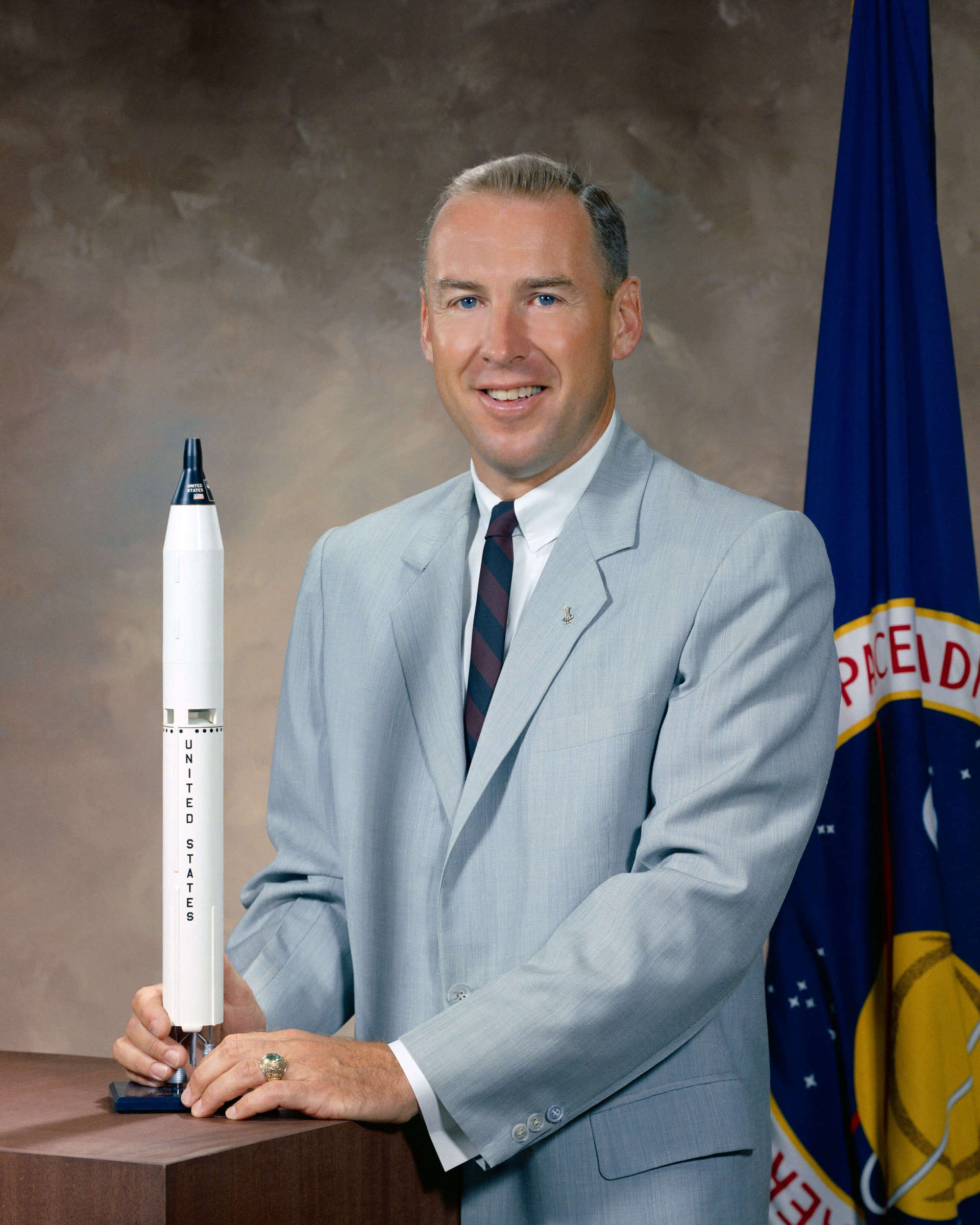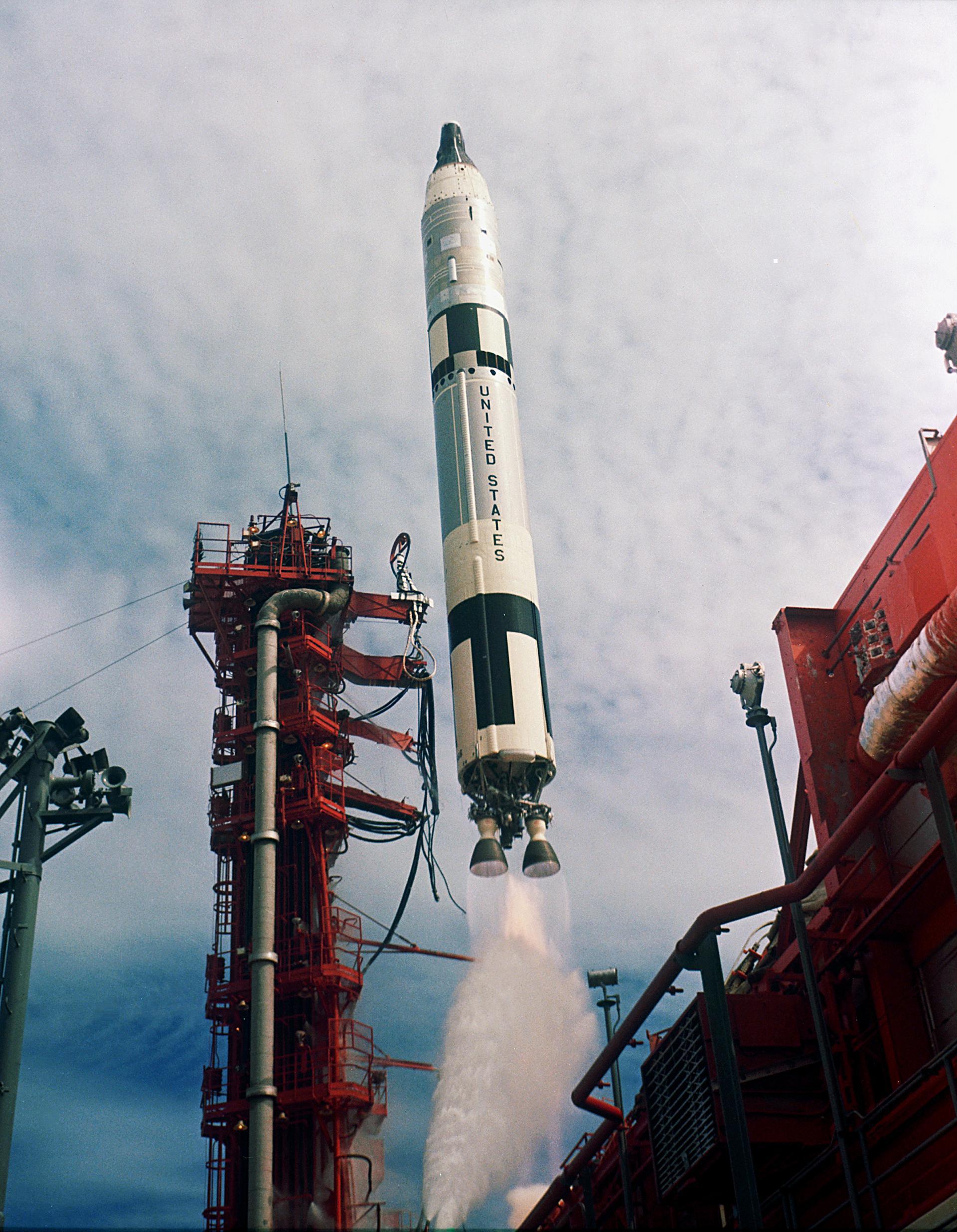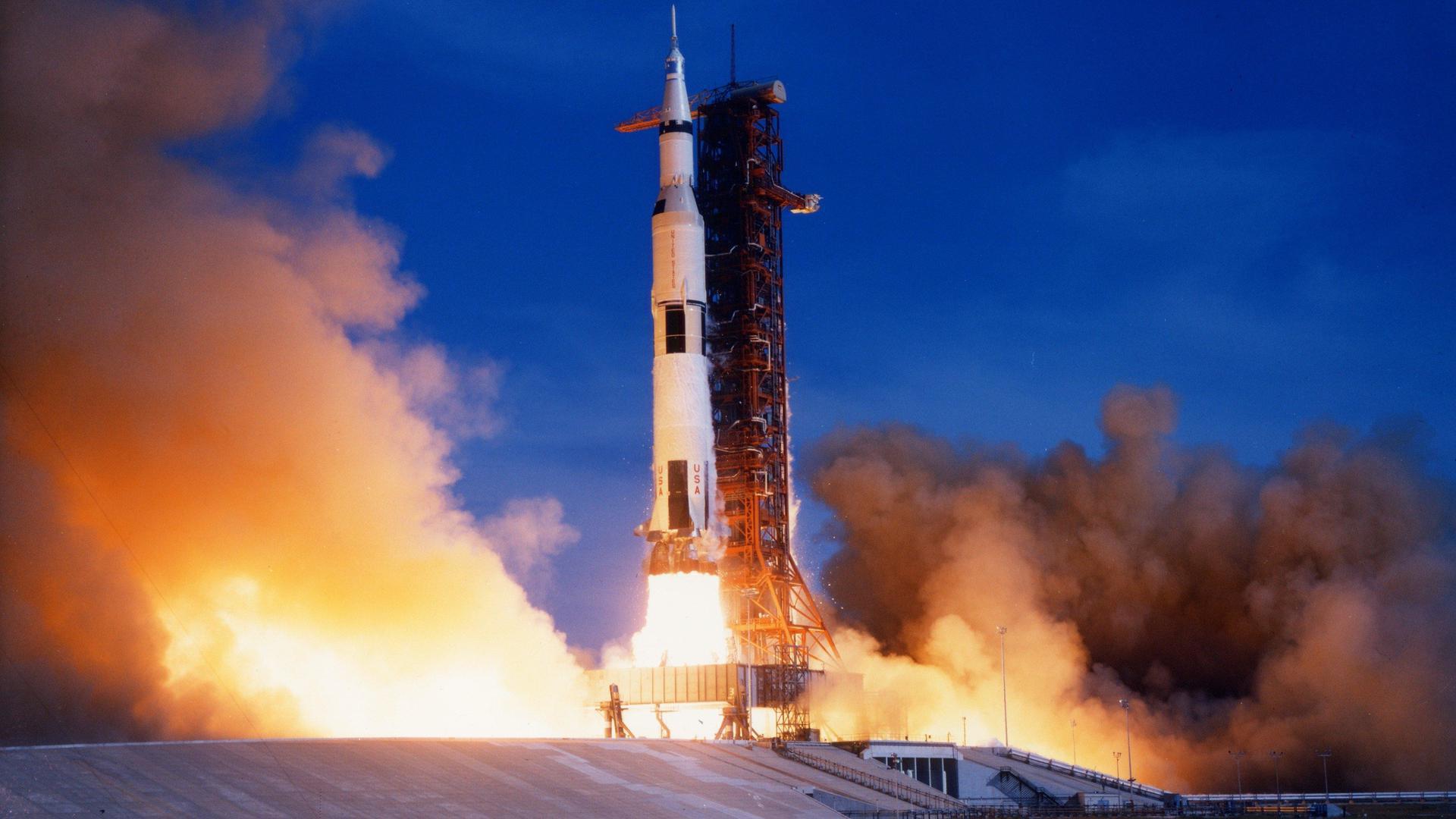Jim Lovell
American - (NASA)
Deceased
Date of Birth: March 25, 1928
Date of Death: Aug. 7, 2025
James Arthur Lovell Jr. is a former NASA astronaut, Naval Aviator, and retired Navy captain. Lovell is known for being the commander of the ill-fated Apollo 13 mission, which suffered a critical failure en route to the Moon but was brought back safely to Earth through the efforts of the crew and mission control. In addition to being part of the Apollo 13 crew, Lovell was the command module pilot of Apollo 8, the first Apollo mission to enter lunar orbit.
Titan II GLV | Gemini VII
National Aeronautics and Space Administration | United States of AmericaCape Canaveral SFS, FL, USA
Dec. 4, 1965, 7:30 p.m.
Status: Success
Mission:
Gemini 7 was the fourth crewed mission of the NASA's Project Gemini. The mission was commanded by Command Pilor Frank F. Borman, II and Pilot James A. Lovell, Jr. The crew spent nearly 14 days in space, and their spacecraft was the passive target for the first crewed space rendezvous performed by Gemini 6A. The mission began on December 4, 1965, 19:30:03 UTC and ended on December 18, 1965, 14:05:04 UTC.
Low Earth OrbitTitan II GLV | Gemini XII
National Aeronautics and Space Administration | United States of AmericaCape Canaveral SFS, FL, USA
Nov. 11, 1966, 8:46 p.m.
Status: Success
Mission:
Gemini 12 was the tenth and final crewed mission of the NASA's Project Gemini. It was commanded by Command Pilot James A. Lovell, Jr. and Pilot Edwin "Buzz" Aldrin, Jr. The crew performed three EVAs, redezvoused and docked with an Agena target vehicle, and performed various scientific experiments. The mission started on November 11, 1966, 20:46:33 UTC and ended on November 15, 1966, 19:21:04 UTC.
Low Earth OrbitSaturn V | Apollo 8
National Aeronautics and Space Administration | United States of AmericaKennedy Space Center, FL, USA
Dec. 21, 1968, 12:51 p.m.
Status: Success
Mission:
Apollo 8 was the first flight of the mighty Saturn V launch vehicle key to human exploration of the moon. The three-astronaut crew — Commander Frank Borman, Command Module Pilot James Lovell, and Lunar Module Pilot William Anders. This Mission was the first manned spacecraft to orbit the moon.
Low Earth OrbitSaturn V | Apollo 13
National Aeronautics and Space Administration | United States of AmericaKennedy Space Center, FL, USA
April 11, 1970, 7:13 p.m.
Status: Success
Mission:
Apollo 13 was the famous mission that never made it to the moon's surface because of a catastrophic malfunction on board, but the astronauts did return safely to the Earth. The mission was commanded by Jim Lovell, the Command Module Pilot was Jack Swigert, and the Lunar Module Pilot was Fred Haise. The mission launched on April 11th, 1970 and the Capsule safely landed in the ocean on April 17th, 1970.
Lunar OrbitThe National Aeronautics and Space Administration is an independent agency of the executive branch of the United States federal government responsible for the civilian space program, as well as aeronautics and aerospace research. NASA have many launch facilities but most are inactive. The most commonly used pad will be LC-39B at Kennedy Space Center in Florida.
Electron
Raise and Shine (RAISE-4)
Rocket Lab Launch Complex 1B - Rocket Lab Launch Complex 1, Mahia Peninsula, New ZealandRAISE-4 (RApid Innovative payload demonstration Satellite-4) is a Japan Aerospace Exploration Agency (JAXA) satellite for on-orbit demonstrations of …
Kuaizhou 11
DEAR-5
Launch Area 95A - Jiuquan Satellite Launch Center, People's Republic of ChinaDEAR-5 is a commercial in-orbit payload and micro-gravity experiments hosting spacecraft developed by Chinese commercial company AZSPACE for various …
Long March 12
SatNet LEO Group 16
Commercial LC-2 - Wenchang Space Launch Site, People's Republic of ChinaA batch of Low Earth Orbit communication satellites for the Chinese state owned SatNet constellation operated by the China Satellite Network Group. …
Falcon 9
Starlink Group 6-90
Space Launch Complex 40 - Cape Canaveral SFS, FL, USAA batch of 29 satellites for the Starlink mega-constellation - SpaceX's project for space-based Internet communication system.
Falcon 9
Starlink Group 15-11
Space Launch Complex 4E - Vandenberg SFB, CA, USAA batch of 27 satellites for the Starlink mega-constellation - SpaceX's project for space-based Internet communication system.




